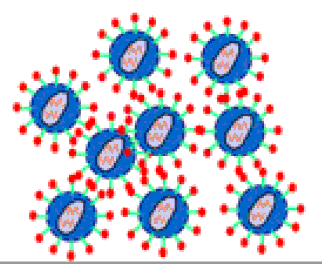Papers in the Biological Sciences
Date of this Version
2-2014
Document Type
Article
Citation
PNAS 111:8 (February 25, 2014), pp. 3146-3151; doi: 10.1073/pnas.1318175111
Abstract
Lack of an effective small-animal model to study the Kaposi’s sarcoma- associated herpesvirus (KSHV) infection in vivo has hampered studies on the pathogenesis and transmission of KSHV. The objective of our study was to determine whether the humanized BLT (bone marrow, liver, and thymus) mouse (hu-BLT) model generated from NOD/SCID/IL2rγ mice can be a useful model for studying KSHV infection.We have tested KSHV infection of hu-BLT mice via various routes of infection, including oral and intravaginal routes, to mimic natural routes of transmission, with recombinant KSHV over a 1- or 3-mo period. Infection was determined by measuring viral DNA, latent and lytic viral transcripts and antigens in various tissues by PCR, in situ hybridization, and immunohistochemical staining. KSHV DNA, as well as both latent and lytic viral transcripts and proteins, were detected in various tissues, via various routes of infection. Using double-labeled immune-fluorescence confocal microscopy, we found that KSHV can establish infection in human B cells and macrophages. Our results demonstrate that KSHV can establish a robust infection in the hu-BLT mice, via different routes of infection, including the oral mucosa which is the most common natural route of infection. This hu-BLT mouse not only will be a useful model for studying the pathogenesis of KSHV in vivo but can potentially be used to study the routes and spread of viral infection in the infected host.


Comments
Copyright © 2014 NAS. Used by permission.